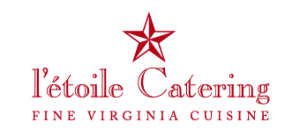Virginia Thanksgiving
 Stuffing or Dressing?
Stuffing or Dressing?
As I start to plan my menu for my family Thanksgiving a few questions come to mind. Being from Virginia, born in Richmond, and currently having a restaurant in Charlottesville – just who did host the first Thanksgiving? As if the in laws were not enough for you this time of year, gently steer the conversation to our history and culinary heritage.
Stuffing in the middle ages was known as farce, from the Latin farcire (and French farcir) meaning to stuff. Farce originally denoted a brief, lighthearted play stuffed in between lengthy religious productions to keep the audience from being bored.
Forcemeat and farce were also common terms referring to a spiced chopped meat mixture, currently still in use when referring to sausage.
The term stuffing first appears in English print in 1538. After 1880, it seems the term stuffing did not appeal to the propriety of the Victorian upper crust, who began referring to it as dressing. Nowadays, the terms stuffing and dressing are used interchangeably, with stuffing being the term of preference in the South and East portions of the United States.
Oyster stuffing was very popular in the nineteenth century and remains so today. Southerners often prefer pecan, rice or cornbread stuffing. Italians like sausage in their stuffing. Dried fruit, potatoes, and apples are a favorite with Germans.
Adding more flavor to Thanksgiving’s old stuffing, many historians doubt whether the Massachusetts settlers deserve any credit for hosting the first Thanksgiving in English America. Evidence points to Berkeley Plantation in present-day Virginia, less than 50 miles upriver from that first Jamestown settlement. At Berkeley Plantation, a band of new colonists held Thanksgiving on Dec. 4, 1619. But theirs was not a festival of binging on food and drink: The colonists at Berkeley Plantation lacked the provisions and time to hold that kind of a celebration. Their thanksgiving was more religious than culinary. Still, other historians point to an earlier ceremony held at Cape Henry on April 29, 1607, when the original Jamestown settlers made land and gave thanks for their safe passage–again more of a religious ceremony than a festival.
Naturally there are turf wars over historic ‘firsts’ between Massachusetts and Virginia, but a case can be made for crediting Cape Henry and Berkeley Plantation with the first ritual of giving thanks, while Plymouth certainly set the thankful tone for ritual gorging. And the latter is far more appealing to the appetites of the average American family.
So why the confusion over the historical narrative? That entire Berkeley settlement was destroyed by a Native American massacre, reasonably leaving the tradition’s torch to their English brethren to the north. Regardless, the idea of giving thanks for what one has is relevant whether Berkeley Plantation or Plymouth gets credit for the act.
Ironically, the original destination of the Pilgrims when they left England in September 1620 was present-day Virginia where there was an existing contingent of English colonists. Instead, the Mayflower first spotted land in November off Cape Cod and thus altered the course of English expansion in America and Thanksgiving history.


